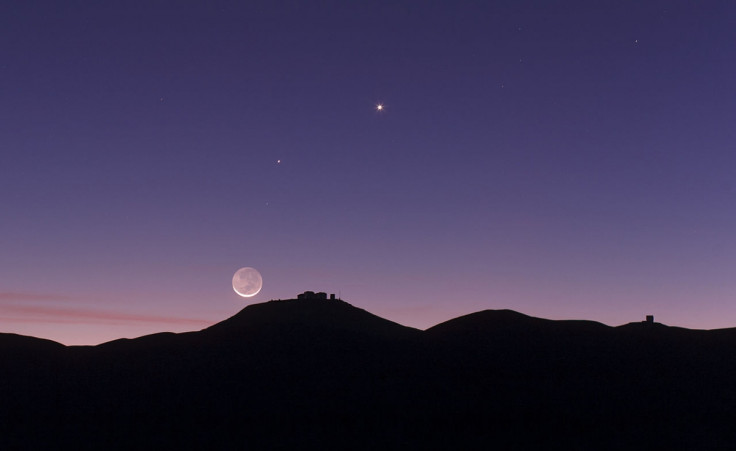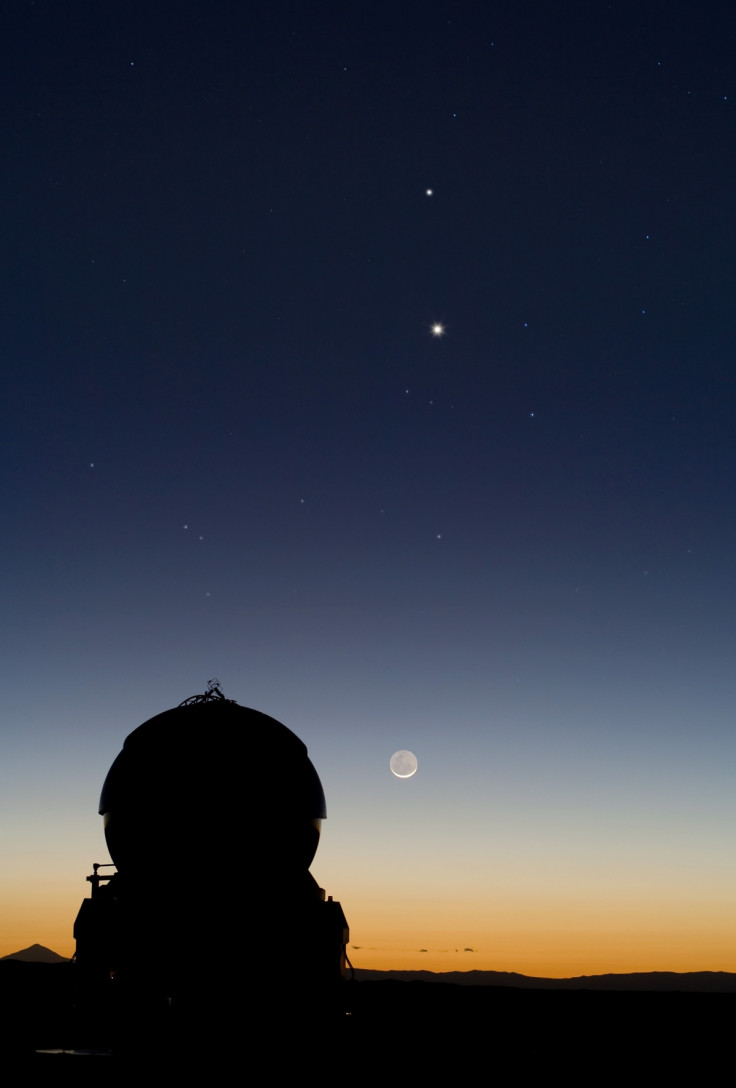Moon, Venus and Mercury to Appear in Night Sky on 28 March: How to See Celestial Event

On the morning of 28 March, the moon, Venus and Mercury will appear in the night sky at the same time.
The conjunction of Venus and Mercury will see the two planets appear above and below the moon respectively.
As long as the skies are clear, the event will be visible across the world. According to Earthsky.org, the moon and Venus will appear over the eastern horizon, while Mercury should appear below the crescent moon, although the latter will be more easily seen from the Southern Hemisphere and tropical latitudes of the Northern Hemisphere.
The conjunction will appear in the sky at dawn or just before dawn on 28 March.

Earthsky notes: "The moon and Venus rank as the brightest and second-brightest celestial bodies of night-time, respectively, so these two luminaries should stand out mightily in tomorrow's early morning sky.
"Mercury, though nowhere as brilliant as Venus, still shines as brilliantly as the sky's brightest stars. Yet, from temperate and far northern latitudes in the Northern Hemisphere, Mercury sits too glare too the glare of sunrise to be seen easily, if at all."
Explaining how to find Venus, Space.com says people should look towards the east-southeast: "You'll immediately notice the crescent moon, which should appear as slender sliver with only 15% of its disk illuminated by sunlight. Hovering below and to the right of the lunar crescent will be the planet Venus, shining like a brilliant silvery-white celestial.
"Venus and the moon will be separated by roughly four degrees, which is roughly equal to one-half the apparent width of your fist held at arm's length. (Your closed fist held at arm's length covers about 10 degrees of the night sky.)"
People viewing with a telescope will see Venus just over half full. Once stargazers have identified the planet, they should be able to see it all day – it will appear as a tiny white spec against the blue sky, the website states.
© Copyright IBTimes 2025. All rights reserved.






















